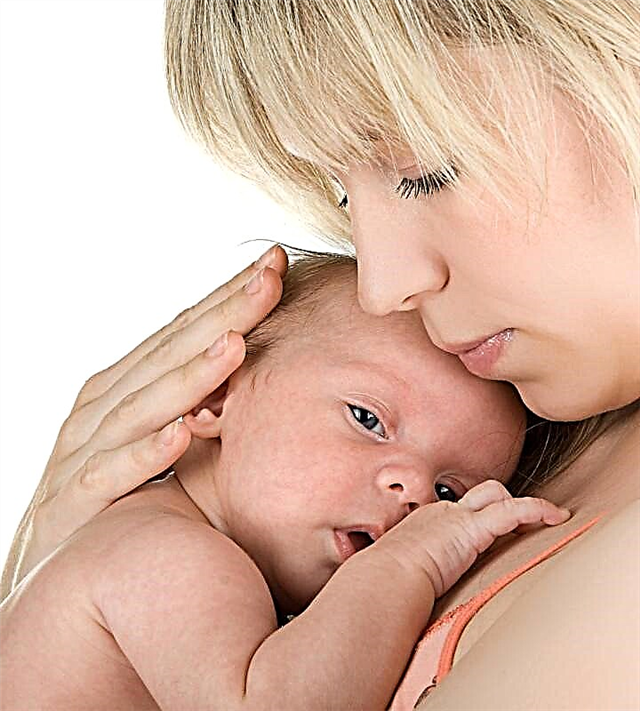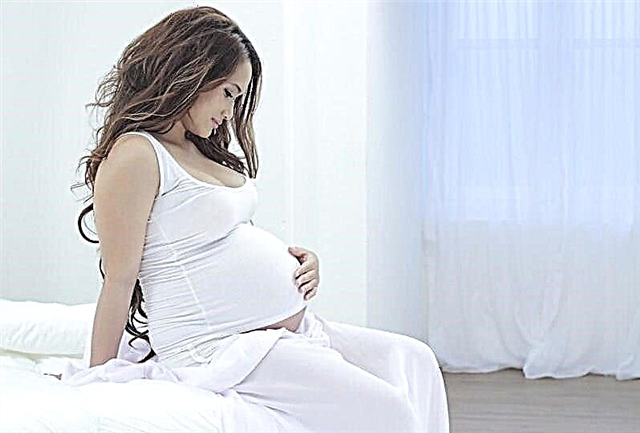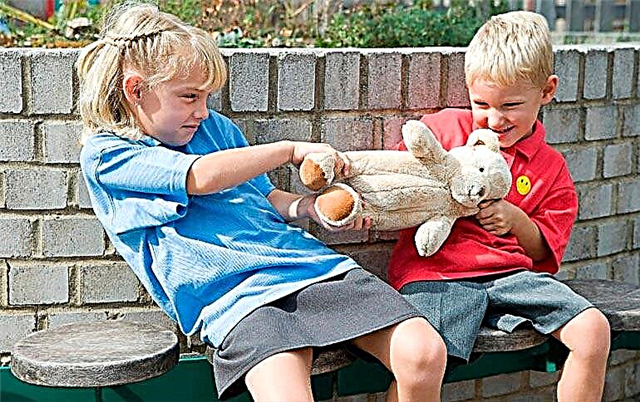
Physical activity is very important for the harmonious development of children. And it is not at all necessary to raise a future Olympic champion from a baby. To maintain its shape and health, an adequate and delicate load is quite enough. Stretching for children is one of such loads that you can master and practice at home on your own.

What it is?
Stretching is a set of special physical exercises that are aimed at gradually increasing the motor range of all muscle groups. Children's stretching is a separate area of fitness for children. Continuous practice of these exercises helps the child keep all joints mobile and active, the elasticity of the ligamentous and tendon apparatus increases.
Speaking of stretching in general, experts imply that classes in this type of gymnastics should begin precisely in childhood, while the muscle, tendon and ligamentous tissues, joints and cartilages are relatively "soft", mobile. It is not necessary that then the child will certainly conquer the champion podium and become the world record holder in rhythmic or artistic gymnastics, aerobics, or become a champion in any other professional sport. However, the great stretch that gaming stretching will help to acquire will stay with him for life. And good stretching is, first of all, a guarantee of less risk of injury in case of a fall or other accident.
Stretching as a whole system of sports training is applied to increase body flexibility, to strengthen the musculoskeletal system. Exercises are actively used in training by athletes of various profiles - from gymnasts to hockey players and boxers. But even separately, this complex is an excellent way to improve the physical form of a growing organism and create a big "reserve" for the future in terms of the child's health.


"Stretch" in translation from English means stretching, elasticity. And this fully reflects the essence of the gymnastic complex. Its uniqueness and main feature lies in the fact that no one really invented anything - the basis is taken from movements that are considered quite natural for humans. For example, we often stretch when getting out of bed or getting up from the table after long sedentary work. This is stretching.
Features of children's stretching are that the child does not get tired during the game-lesson, does not perceive it as something unpleasant, obligatory, which adults insistently demand of him.
There are special programs for preschoolers and schoolchildren. The thing is that preschool and school age have their own characteristics and nuances of muscle tissue growth, and an experienced instructor must take them into account when planning an individual or group program for children.

What is it for?
As mentioned earlier, stretching and mobility of the joints allows the child to grow more harmoniously. Very often, children experience physiological pain during periods of intensive growth of bone and muscle tissue, complain of pain in the knees and back. Regular stretching will help you get through these periods more easily, and vigorous growth will not give your child any discomfort.
Children and adolescents are more likely than adults to deal with dislocations and fractures. And this is understandable - they are more inquisitive, mobile, restless, they fall more often, comprehending the foundations of the universe, and therefore stretching can be regarded as a kind of "insurance" in case of injury - a child with good stretching is less likely to receive serious injuries even during a fall than a child who does not have her.
Stretching helps the child acquire not only greater physical endurance, it makes him more stress-resistant. Such guys are less prone to emotional instability, overstrain, and with the modern pace of life, this is an extremely necessary skill.

Stretching helps to correct problems with posture and gait, and therefore its elements are always included in the program of physiotherapy exercises for children with musculoskeletal disorders. If there are no problems with posture, then systematic exercises are their excellent prevention.
Psychosomatics experts consider stretching excellent "training" of the muscle frame - the muscles gradually get used to develop an adequate bodily response to any emotional and mental overload, and this several times reduces the risk of developing psychosomatic ailments.
Children's stretching is recommended not only for future athletes, but also for those children who want to become actors, drivers and pilots - this gymnastics is an excellent training for coordination of movements.
Finally, stretching promotes the development of imagination. Play training implies the child's personal participation in a kind of "fitness fairy tale" in which the child will try on himself in the truest sense of the word images of a snake, hare, chanterelle, frog, goldfish and other interesting and well-known characters, which are quite simple even for a child imagine.
Today, children are experiencing general physical inactivity. They are very inactive, which is the cause of many health problems, pediatricians say. Passion for stretching will help a child to normalize weight, muscle tone, spine and joints, and this will be an excellent platform for his healthy growth and development.


Basic rules for classes
Speaking about the stretching rules, it should be noted that the main one is the reverse reaction - the child should like the activities, otherwise he will not gain any benefit from them. Children usually enjoy these workouts. And in order to achieve this, it is important to remember that the best workout is a workout with music. If there are several children, it is even better, since this will allow you to play a real fairy-tale performance.
All exercises should be light enough so that the child does not get tired, performing them, the load on the muscles and joints should be delicate and adequate. The basic rules of the lesson are as follows:
- the muscles must be thoroughly warmed up, prepared for the main set of exercises, so the training always starts with a warm-up;
- exercises are performed at a slow pace and with a great deal of fluency;
- techniques and proposed exercises should be aimed at symmetrical stretching of the muscles - on the right and on the left;
- during the lesson, the child should breathe calmly and evenly.


The exercises that are offered to the child must meet the basic requirements - they must be safe for his health, interesting, visual, shown by a trainer, instructor or an adult who works with the child at home. The story-fairy tale that will accompany the action should be age-understandable, light, imaginative and interesting.
Exercise regularly, otherwise the achieved progress will be quickly lost in a long break and you will have to start all over again. Gradually, the complexity of the techniques increases, but it is possible to complicate the exercise only when the kid has completely mastered the simple version of the exercise. The number of repetitions of one exercise should also increase gradually.
And one more very important rule says that an exercise that is painful should not be part of the stretching system. If it hurts, this may be due to the fact that the muscles were poorly warmed up and not ready for the main load, or the exercise is performed too sharply, quickly, intensively.
If the child complains of pain, you should stop exercising, allow the muscles to recover and return to training in a more gentle mode, even if it becomes a kind of "step back" in your program.


Examples of exercises
Any story that a child loves can become your favorite "phineas fairy tale". You can make a set of exercises based on "Kolobok" or "Teremok" - there are many animals, depicting the plastic of which the child will receive not only benefits for the muscles, but also the pleasure of recognizing and visualizing favorite images.
Here is an example of a fairy tale that will help you and your baby get acquainted with play stretching at home. It is called "Lazy Masha".
“In one city there was a girl named Masha who was so lazy that she didn’t like to walk with her own feet. All people did it with pleasure, but Masha did not. " At this place, you and the child should actively walk, show how everyone walked, and walk slowly, barely moving your legs, as Masha did.
“Once Masha went to the forest to pick flowers. All the children in this city loved to collect flowers. " At this point, the child sits down on his haunches, stretches one leg and begins to reach out from a static position for the next “flowers”.
“Masha saw a large meadow with tulips and daisies growing on it. But she was too lazy to pick flowers, and she lay down in the grass. " From a prone position, the child should reach for the imaginary flowers to the right and left.

“On the way home, Masha, who was walking again very slowly, reluctantly, was caught up by a heron, who offered to put the girl on her back and take her home.” The child shows the heron - spreads his arms to the sides, spreads his legs wide, flaps his wings.
“Masha rode with flowers on heron's back. But the heron quickly got tired and asked the girl to go with her legs. Masha was upset and began to cry. Then a foal ran out to meet her and invited her to ride on it. " At this point, the foal should be shown. The child stands on all fours, keeps his head straight, in turn straightens his leg back - right and left alternately.
"The foal galloped, so quickly that Masha could not resist and fell." The child must show how the girl lies on the ground, rests. It is important to achieve general relaxation of all muscles, for which you can separately ask the child to show how Masha's arms, legs, neck, tummy, etc. relaxed.
"Masha lies down and sees a big camel coming towards him." The child shows this animal, standing on all fours, and then throwing his hands behind his head and rounding his back with a "hump".
“Let's go, Masha, I'll take you home,” the camel said. But Masha again could not resist on a high hump and fell. " The child lies on the floor and actively shakes his arms and legs.
"And the girl realized that she would have to walk with her own feet." The child proceeds to active walking with smooth and high knee lifts.
“In the evening, when Masha got home, she was so happy that she was able to overcome her laziness that she fell asleep as deeply as she had never before. And she had wonderful magical dreams. " The child performs a set of exercises for calm breathing and smooth stretching of the arms and legs.

Any fairy tale for preschoolers and younger students can be made just as interesting and useful. Basic exercises will help with this.
- Ballerina is a hand exercise. You need to stand up straight, bend your legs slightly at the knees, and turn your feet in different directions. Smoothly the handles should close behind the back at the lumbar level. Having held them like this, you should return to the starting position and repeat. The exercise is great for stories about a tin soldier, about princesses who loved balls and dances, about fairies.
- Runner is a leg exercise. On one leg, you need to lunge, stepping forward and bending it at the knee joint. The second leg remains straight. It is important that the feet look straight ahead, not to the sides. The handles rest on the knee, the body goes slightly forward, but you should not bend the back. The straight leg behind is gradually and very smoothly retracted back until there is a feeling of muscle tension in it. Then the exercise is done on the second leg. This technique is perfect for describing how princes rush to the rescue, how they pursue an enemy or a dragon.
- "Horse" - exercises for the back and abdomen. The child stands on all fours, alternately pulling the right and left legs back to the muscles to tension, and then doing the same with the hands. It is important to keep the back straight. Useful for demonstrating the heroic horses of superheroes and princes.
- "Gymnast" is an exercise for the hips. We need a ball. The child sits, resting his hands on the floor from behind, legs wide apart in different directions. You need to take the ball in your hands and gradually move it forward without changing the position of your legs. This exercise will help to visually show how, for example, a carriage is driving, or how a group of traveling fairy tale heroes slowly moves through the forest.
- "Cobra" - lying on your stomach, you need to raise your head higher and hiss. The exercise is complicated by writhing movements of the body, like a real snake crawling.
The rest of the exercises will be helped by the trainer. Children's scratching is available at any fitness center.
For an example of play stretching for children, see the following video.



